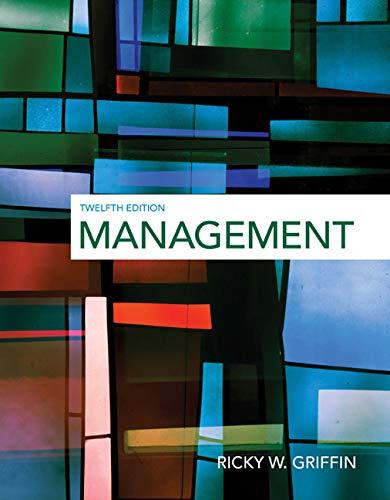Flexible working schemes have been around for many years, and are generally expected to be found in
Question:
Flexible working schemes have been around for many years, and are generally expected to be found in any organization that wants to retain its staff. The standard 9-to-5 business hours structure is an old concept. Employees being able to work from home or manage their own work hours is no longer an unusual concept. In addition, employers receive numerous benefits from this flexibility including increased productivity.
However, the make-up of employees is evolving once again. The Millennials, or Generation Y, have different needs and preferences in comparison to the generation before them, resulting in organizations having to evolve with them.
The Australian Ernst and Young accounting firm EY Oceania recently introduced a “life leave” policy that allows employees to apply for 6–12 weeks unpaid leave in one or two blocks for a holiday, to tend to family commitments, or for any other personal reason. The policy, which came into effect on April 1, 2019, also gives employees the opportunity to work full-time during term time, and to work part-time or apply for the unpaid leave during school holidays.
EY Oceania’s People Partner, Kate Hillman said that the millennial workforce was one of the primary reasons for introducing the policy because their career preferences were driven mainly by the flexibility provided by a job. In 2020, with the expectation that 80 percent of EY Oceania’s workforce will be composed of millennials workers, the company wants to encourage its employees to pursue outside interests in order to keep them motivated and stimulated.
The approach that EY Oceania has taken is backed up by the findings of a 2014 research study in the Journal of Organizational Change Management, which investigated work motivations of millennials. The study illustrates that Generation Y finds monotonous work and daily processes a demotivator. This was not only to do with the tasks being conducted at work but also with the work environment and employee behaviors. The study also indicates that the millennial workforce are motivated by change, being allowed to take responsibility for their work tasks and they appreciate the flexibility in choosing when and where tasks are carried out. Having the time to pursue hobbies and other activities was another important factor for respondents, although some do not mind giving up their free time for work-related tasks if they are trusted to manage their own time.
While flexible schemes such as “life leave” have demonstrated a range of benefits including reduced absenteeism, attracting a wider pool of job applicants and capital cost savings on office space, they may also come at a cost to organizations. Managers need to ask what happens if a large number of staff request leave arrangements at the same time. What is the process for selection? Does too much time away from work impact on the dynamics of the team? If Ernst and Young roll out the Australian ‘life leave’ scheme across the whole company, it will have to accommodate 260,000 employees across 180 countries. One thing is clear—the millennials have spoken and it is up to the organizations to utilize these optimally to realize benefits to their bottom line.
DISCUSSION QUESTIONS
16-1. Would a scheme like the “life leave” scheme motivate you to work for a company like EY Oceania? Why?
16-2. Describe the advantages and disadvantages of flexible schemes like the “life leave.”
16-3. How might you address some of the challenges of the flexible working arrangements described in this case?
16-3. What should organizations take into consideration when trying to motivate the Generation Y workforce?
16-4. Are there any professions in which the “life leave” scheme may not work?
What alternatives are there to motivating employees?
Step by Step Answer:






